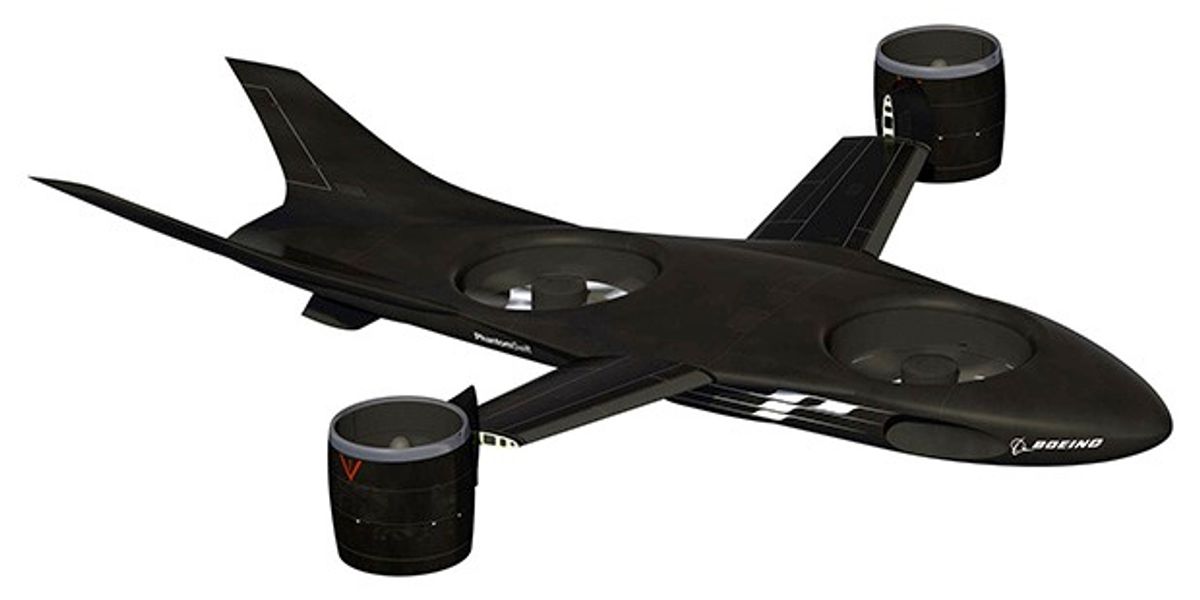Yesterday, DARPA announced the four companies that'll be competing to develop a new experimental aircraft that combines the efficiency of an airplane with the versatility of a helicopter. It'll be something like a V-22 Osprey, except that DARPA is hoping for "radical improvements in vertical and cruise flight capabilities." Three of the companies provided concept art to DARPA; Boeing's Phantom Swift is pictured above. And the thing that every proposal has in common? They're all robots.
Robots weren't a specific requirement for the VTOL X-Plane, but DARPA says that the best proposals ended up being unmanned. It shouldn't be a surprise that this is the case; in a contest based on speed, efficiency, and payload, including a human pilot would be a significant disadvantage: humans are fragile and require a lot of maintenance, and it's becoming increasingly arguable that a human in an aircraft has the potential to be more of a liability than an asset, at least in some cases, which may include (say) cargo delivery into dangerous areas.
Specifically, DARPA is looking for an aircraft capable of demonstrating the following:
- Achieving a top sustained flight speed of 300-400 knots (555-740 km/h)
- Raising aircraft hover efficiency from 60 percent to at least 75 percent
- Presenting a more favorable cruise lift-to-drag ratio of at least 10, up from 5-6
- Carrying a useful load of at least 40 percent of the vehicle’s projected gross weight of 10,000-12,000 pounds (4.5-5.4 metric tons)
“We were looking for different approaches to solve this extremely challenging problem, and we got them,” said Ashish Bagai, DARPA program manager. “The proposals we’ve chosen aim to create new technologies and incorporate existing ones that VTOL designs so far have not succeeded in developing. We’re eager to see if the performers can integrate their ideas into designs that could potentially achieve the performance goals we’ve set.”
It's interesting to see how DARPA's aircraft programs have evolved over the last few years. For example, the Transformer program (this thing) started out as an actual flying car that humans could drive at the concept stage, and has since turned into a pure robot. In light of the Army's long-term goals, this is something that has to happen to keep things flexible and sustainable over next several decades.
Preliminary designs for the VTOL X-Planes are due at the end of 2015, and DARPA will pick one to build for real, to fly in 2017.
[ DARPA ]
Evan Ackerman is a senior editor at IEEE Spectrum. Since 2007, he has written over 6,000 articles on robotics and technology. He has a degree in Martian geology and is excellent at playing bagpipes.





